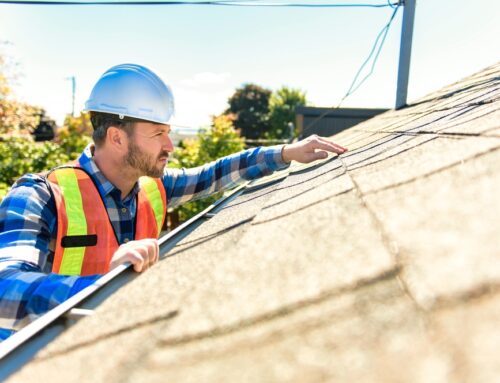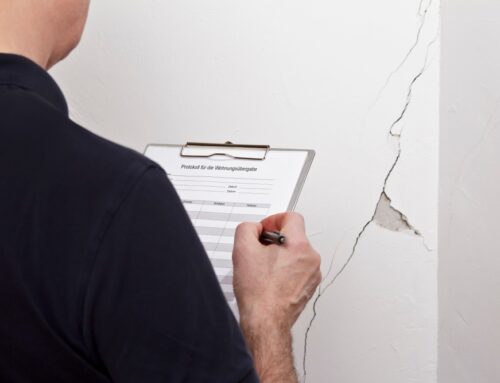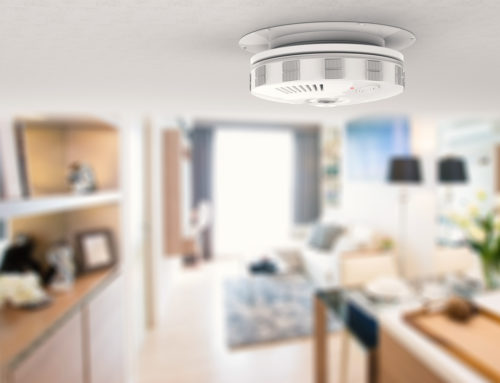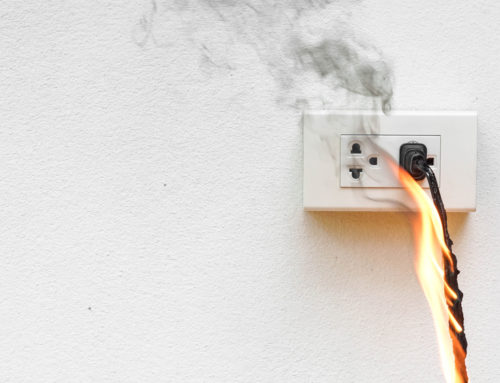This Wildfire Avoidance Checklist is designed to help you develop a maintenance plan that will give your property a better chance of surviving a wildfire. Research shows that embers (burning pieces of airborne wood or vegetation that can travel more than a mile) and small flames are the main way the majority of homes ignite in wildfires. Follow these tips to minimize your risk, starting with the structure itself and moving out to the three zones in the Home Ignition Zone.
The House and Immediate Zone
The Immediate Zone includes both the home and up to 5 feet from the furthest attached exterior point of the home. Ignition resistant building materials, construction techniques, vegetation and debris removal play a vital role before and during wildfires.
The Home and Its Building Materials
- Carports: Remove flammable items stored in carports.
- Crawl Spaces: Remove combustible materials and install 1/8” mesh screen on vents.
- Decks & Elevated Porches:
- Place 1/8” metal mesh screening between low-profile decks from surface to ground, to block embers from collecting underneath.
- Never store flammable materials underneath elevated decks/porches.
- Remove dead vegetation and debris from under decks/porches, and between deck board joints.
- Fencing:
- Use non-flammable fencing material (metal or masonry) when attaching directly to the siding. Wooden fences can carry flames directly to the house.
- Ensure there’s a minimum of at least 5’ of noncombustible material where fencing attaches to the siding.
- Do not add vines or other types of vegetation to fencing material.
- Fireplace Chimneys:
- Remove debris that may accumulate at roof-to-wall intersections.
- Embers from a fireplace can exit the chimney and could ignite a wildfire; to prevent this, install a spark arrestor.
- When wildfires are approaching close the damper, fireplace screens and glass door.
- Foundation: All foundation vents should have 1/8” corrosion-resistant metal screening.
- Garages:
- Weather seal the perimeter of garage doors to help keep embers out.
- Be sure the door is tight fitting, so embers can’t slide under the door or in from the sides.
- If possible, choose a metal or wood core door with metal exterior.
- Gutters:
- Metal roof gutters do not ignite, only the debris material that accumulates in them – that’s why keeping them clean is so important.
- Vinyl roof gutters can ignite when the debris material is ignited, and flaming gutters can fall from the roof edge and land next to the house, which is why the immediate zone needs to be clear of flammable materials.
- Roof Maintenance:
- Keep roofs clean from leaf litter and pine needles.
- Remove all tree limbs within 10 feet of the chimney, or that overhang the roof.
- Roofing Materials:
- Types of Class A fire-rated roofing products offer the best protection. Examples include: Composite shingles, metal, cement tile and clay.
- Inspect shingles/tiles and replace/repair those that are loose or missing to prevent ember penetration.
- If gaps exist between the roof covering and the roof deck at the eave or ridge, fill the space with a “bird stop” material to prevent birds from nesting there.
- Siding:
- Use ignition-resistant building materials on exterior walls: stucco, masonry products, plaster and cement.
- Seal gaps and crevices.
- Examine the siding for locations where embers could accumulate or lodge and apply caulking at trim-to siding locations where it is missing or has failed.
- Skylights:
- Remove debris next to and on skylights.
- Glass is a better option than plastic or fiberglass.
- Sliding Glass Doors:
- Choose double-pane tempered glass.
- Consider fireproof shutters to protect large windows and glass doors from radiant heat.
- Vents:
- Consider purchasing closure devices for foundation and gable end vents and installing a louver-type dryer vent that stays closed unless the dryer is running.
- Clean debris from attic vents and install 1/8” metal mesh screening.
- For turbine vents, access the attic and inspect where the vent attaches to the roof. Attach 1/8” screening to the roof sheathing.
- Dormer-face vents should be replaced with low-profile vents.
- Ridge vents should be rated for high wind/rain exposure.
- Windows: Multi-paned tempered glass can help reduce the risk of fracture or collapsing in a wildfire.
Landscaping/Hardscaping
- Dead vegetation, dried leaves, pine needles and ground debris accumulation should be frequently removed.
- Hardscaping components should be installed around the perimeter of the home, keeping them free of ground litter/debris.
- Concrete, stone or gravel walkways are great additions to the Immediate Zone.
- Remove trees and shrubs from this area; or replace with succulents.
- Trim tree limbs that overhang from the intermediate zone into this area.
- Replace wood mulch products with non-combustible mulch products such as crushed stone/gravel options.
The Intermediate Zone
The Intermediate Zone is from five to 30 feet from the furthest exterior point of the home. Focus on landscaping and hardscaping in this area to create breaks which can influence fire behavior.
Landscaping/Hardscaping
- Clear vegetation from under large stationary propane tanks.
- Create fuel breaks with driveways, walkways/paths, patios and decks.
- Keep lawns and native grasses mowed to a height of four inches.
- Remove ladder fuels (vegetation under trees) so a surface fire cannot reach the crowns.
- Prune trees six to ten feet from the ground; for shorter trees do not exceed 1/3 of the overall tree height.
- Space trees to have a minimum of 18 feet between crowns, lengthening the distance as the slope increases.
- Tree placement should be planned to ensure the mature canopy is no closer than 10 feet to the edge of the structure.
- Trees and shrubs in this zone should be limited to small clusters of a few each to break up the continuity of the vegetation across the landscape.
- Water plants, trees and lawns to keep them from becoming dry.
The Extended Zone
This zone extends out from 30 to 100 feet from the home structure. Keep in mind your property line may end prior to 100 feet. In these instances, work with your neighbor to develop your plans, with the goal of interrupting the fire’s path, and keeping flames smaller and on the ground.
Landscaping
- Dispose of heavy accumulations of ground litter/debris.
- Remove dead plant and tree material.
- Remove small conifers growing between mature trees.
- Remove vegetation adjacent to storage sheds or other outbuildings within this area.
- Trees 30 to 60 feet from the home should have at least 12 feet between canopy tops.
- Trees 60 to 100 feet from the home should have at least 6 feet between canopy tops.
Other Considerations
- Add color and interest with high moisture content plants in containers that could be easily moved to the Intermediate Zone when wildfires are approaching.
- Incorporate a mixture of deciduous and conifer trees.
- Addresses should be visible from the road.
- Closable foundation and gable end vents should be shut when threatened by wildfire and reopened after the danger passes.
- Close and protect home openings, including attic and basement doors and vents, windows, garage and pet doors to prevent embers from gaining access to the home.
- Connect garden hoses, fill pools, hot tubs, garbage cans or other large containers with water and place ladders outdoors.
- Firefighters have been known to use hoses, ladders and water sources to extinguish spot fires.
- Consider installing non-flammable shutters similar to hurricane shutters.
- Consider using noncombustible deck boards (metal and fiber cements), or a solid light weight concrete.
- Install a garage door on both attached and detached garages.
- Move vehicles into a non-combustible area (gravel or concrete) and roll-up all windows.
- When wildfire threat is high, move patio/deck furniture, cushions, door mats and potted plants indoors, or as far away from the home, shed and garage as possible when wildfire warnings are received.
- Place swing/playsets in the Extended Zone.
- Use rubber door mats instead of those manufactured with natural fiber materials.
- When making future patio furniture purchases select fire-resistant options.
This list was developed using information from the National Fire Protection Association (NFPA), the USDA Forest Services, the US Department of the Interior, and the National Association of the State Foresters. More information and additional checklists are available from the NFPA – visit Firewise.org.
Download the Wildfire Avoidance Checklist.






